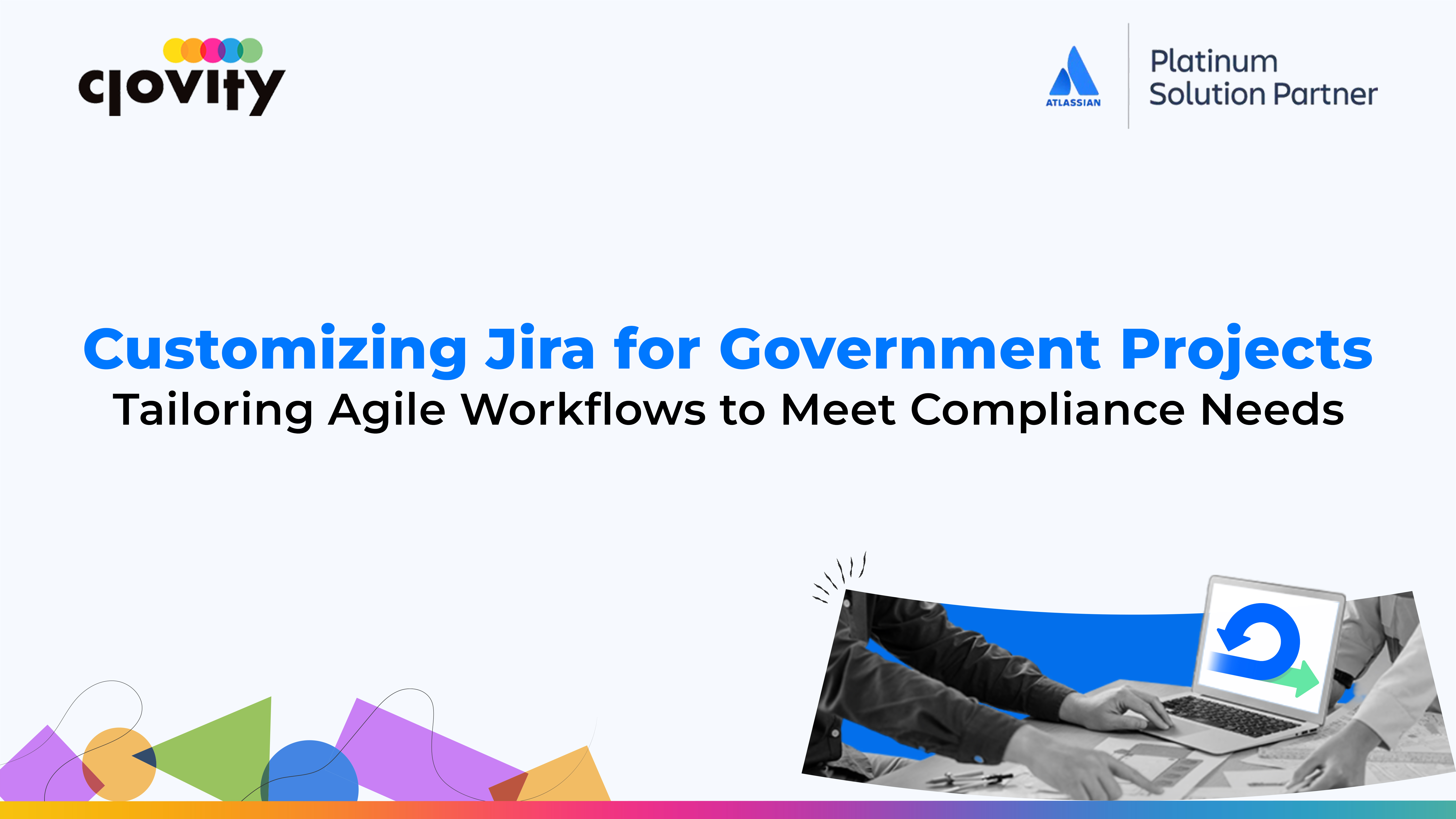Agile frameworks are becoming increasingly common across the public sector, as agencies look to modernize systems, improve accountability, and deliver services more efficiently. However, adopting tools like Jira within government projects comes with unique challenges‚ÄĒespecially when compliance, auditability, and strict process control are non-negotiable.
Jira is well-suited for this environment because of its adaptability. With thoughtful configuration, it can align with government-specific workflows, security mandates, and reporting requirements, all while supporting agile principles like transparency, iteration, and collaboration.
In this article, we’ll explore how Jira can be tailored for government teams, the benefits of adapting agile practices within a regulated environment, and key considerations for configuring the platform without compromising on control.
Why Jira Is a Strong Fit for Government Agencies
At its core, Jira is a flexible issue and project management system. Whether you’re tracking software development, procurement processes, case work, or policy review, Jira’s customizable workflows, permissions, and audit trails provide a solid foundation.
Here’s why government teams continue to adopt Jira:
- Configurability: Workflows can be tightly structured to meet documentation and review requirements.
- Transparency: Progress is easily visible across teams and roles, making reporting and oversight simpler.
- Role-Based Access: Permissions can be aligned with federal access policies, ensuring appropriate data handling.
- Audit Readiness: Every action is logged, allowing teams to maintain records for compliance audits.
By configuring Jira properly, agencies can support agile initiatives while maintaining the governance they need.
Adapting Agile to a Compliance-First Environment
One of the biggest hurdles government teams face when adopting agile tools is aligning flexibility with formal controls. Agile emphasizes adaptability, but government work often involves:
- Strict documentation protocols
- Defined sign-off procedures
- Auditability for every action taken
- Federal security standards like FedRAMP or FISMA
Here’s where Jira’s customization capabilities come into play. Agencies can:
- Define required workflow transitions (e.g., ‚ÄúNeeds Legal Review‚ÄĚ before ‚ÄúReady to Publish‚ÄĚ)
- Use validators to enforce required fields before progressing an issue
- Capture approvals and digital signatures as comments or custom fields
- Configure user roles with granular permissions (e.g., view-only access for external reviewers)
By embedding these processes into workflows, teams can stay agile while remaining compliant.
Key Jira Features for Government Projects
1. Custom Workflows
Workflows in Jira can be fully customized per project or issue type. Government teams can model their process stages exactly, such as:
- Intake ‚Üí Initial Review ‚Üí SME Review ‚Üí Final Review ‚Üí Approval ‚Üí Archive
Each transition can include conditions (who can make the change), validators (what information must be included), and post-functions (such as sending notifications or updating fields).
This reduces risk by enforcing steps, documentation, and accountability.
2. Custom Fields and Screens
Different projects may need different types of metadata‚ÄĒfor instance, contract numbers, document versions, or classification levels. Jira allows you to:
- Add custom fields for specialized tracking
- Organize fields into screen tabs
- Make certain fields mandatory at specific workflow stages
This helps ensure your team captures the right data at the right time.
3. Permission Schemes
Security and access control are critical in government work. Jira allows detailed permission schemes to ensure that:
- Only authorized users can transition issues or view sensitive content
- External contractors can be granted restricted access
- Approvers have sign-off authority while others have view-only rights
This helps align with the principles of least privilege and data segregation.
4. Audit Logs and Issue History
Every change in Jira is logged. Whether it’s a field update, workflow transition, or comment, the system captures who did what and when.
This makes compliance auditing easier‚ÄĒagencies can pull complete records of activity for any issue or project.
5. Reports and Dashboards
Government programs often require regular reporting to internal leadership, stakeholders, or oversight committees.
Jira dashboards can show:
- Progress by stage
- Status of current initiatives
- SLA performance
- Time to resolution
- Custom metrics based on your project structure
This data helps leaders make informed decisions while maintaining transparency.
Working with a Solution Partner
Configuring Jira for government use can be complex. Engaging an Atlassian Solution Partner like Clovity ensures your system is set up correctly from the beginning. We understand federal requirements, security expectations, and how to make Jira work within the framework of your agency’s operations.
We’ve helped teams across public and hybrid sectors migrate from spreadsheets, legacy tools, and disjointed workflows into integrated, compliance-ready Jira environments.
Final Thoughts
Agile tools like Jira are no longer limited to tech startups‚ÄĒthey‚Äôre proving their value across mission-driven government initiatives. When configured with intent, Jira becomes much more than a task manager; it becomes a foundation for transparent, auditable, and high-performing public sector operations.
Whether you’re tracking program milestones, processing FOIA requests, managing contracts, or modernizing IT systems, Jira can be tailored to support both agility and accountability. The key lies in thoughtful configuration, security-conscious setup, and ongoing engagement with your teams.
ūüďß Contact us at sales@clovity.com or visit ūüĆź atlassian.clovity.com to get started today.


